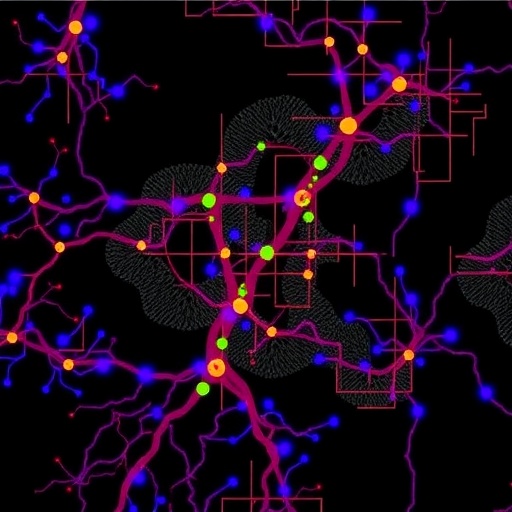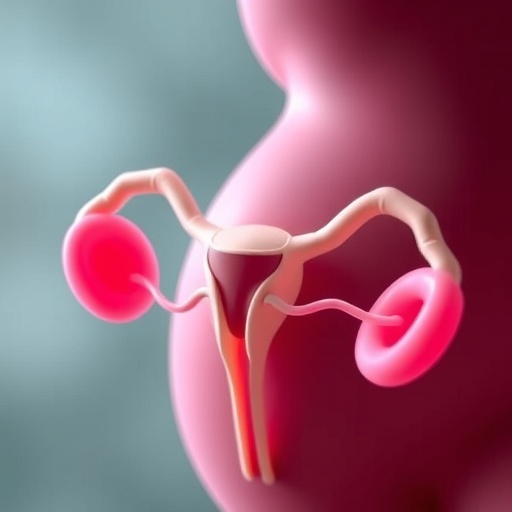In a groundbreaking advancement poised to revolutionize cell biology and neuroscience, researchers have unveiled a novel technique that permits precise and programmable control of RNA localization within living cells and neurons. This technology, termed CRISPR-mediated transcriptome organization (CRISPR-TO), leverages the RNA-binding properties of catalytically inactive Cas13 (dCas13) to manipulate endogenous RNA positioning with an unprecedented level of spatial and temporal resolution. The implications of this approach extend far beyond descriptive studies, offering an active means to probe the functional consequences of RNA placement in diverse cellular compartments.
The spatial arrangement of RNA molecules within cells is increasingly recognized as a fundamental component of gene expression regulation. Unlike traditional views of RNA as freely diffusing messengers, it is now clear that the localization of transcripts to distinct subcellular niches orchestrates local protein synthesis, influences cellular morphology, and modulates response to environmental cues. Despite this recognition, the study of functional ramifications has been largely hindered by the lack of tools capable of perturbing RNA localization in a controlled and reversible manner.
CRISPR-TO emerges as a solution to this challenge by harnessing dCas13’s RNA targeting specificity without cleavage activity, tethered to motor proteins that ferry RNAs to user-defined intracellular destinations. Through this fusion, endogenous messenger RNAs (mRNAs) can be redirected dynamically, allowing researchers to manipulate their spatial distribution within live cells. Crucially, this system achieves inducibility and reversibility, characteristics essential for dissecting acute cellular responses and ensuring minimal off-target perturbations.
The versatility of CRISPR-TO is demonstrated by its successful deployment in guiding endogenous transcripts to an array of subcellular locales including the outer mitochondrial membrane, processing bodies (p-bodies), stress granules, telomeres, and nuclear stress bodies. This breadth validates CRISPR-TO as a universal platform capable of interrogating RNA function in virtually any intracellular compartment, thus overcoming a major limitation of previous approaches which were often restricted to specific organelles or model RNA species.
An intriguing feature of this platform is its exploitation of the cellular cytoskeleton for transport. By tagging dCas13-bound RNAs with motor proteins that traverse microtubules bidirectionally, CRISPR-TO facilitates real-time tracking and modulation of RNA trafficking along dynamic intracellular highways. This approach enables researchers to impose directional RNA movement, mimicking physiological transport mechanisms or creating novel intracellular distributions to test functional hypotheses.
The functional consequences of manipulating RNA localization were vividly illustrated with β-actin mRNA, a well-studied transcript crucial for cytoskeletal assembly in growth cones. Redirecting β-actin mRNA enhanced the formation of dynamic filopodial protrusions – finger-like membrane extensions involved in environmental sensing – while simultaneously impeding axonal regeneration. This paradoxical finding suggests a delicate balance whereby spatially regulated mRNA translation modulates neuronal structural plasticity and repair mechanisms, offering new avenues for neuroregenerative therapeutics.
Beyond individual transcripts, CRISPR-TO empowers high-throughput screening of mRNA localization effects on neuronal physiology. Utilizing this system, the researchers identified Stathmin-2 (Stmn2) mRNA localization as a key driver of neurite outgrowth. Stmn2 is a microtubule destabilizing protein critical for axonal maintenance and regeneration, and its localized expression modulated by CRISPR-TO links spatial transcriptomics directly to functional neurobiology.
This technology also opens doors for investigating pathophysiological processes. Many diseases, including neurodegenerative disorders and cancers, involve dysregulation of RNA trafficking and localized translation. CRISPR-TO could allow systematic dissection of how spatial transcriptomic alterations contribute to disease progression, offering potential therapeutic modulatory routes.
Underpinning this innovation is the modular design of the system. dCas13 serves as a programmable RNA scaffold, customizable guide RNAs direct targeting with single-molecule resolution, and motor protein fusions define subcellular endpoint destinations. Inducibility is achieved through chemical or optogenetic triggers, providing temporal control that is essential for following dynamic biological processes in living systems.
Importantly, CRISPR-TO demonstrates robustness across diverse cell types, highlighting its broad applicability. The adaptability to primary neurons as well as cultured mammalian cells underscores its potential for widespread adoption in neuroscience, cell biology, developmental biology, and beyond. This universality ensures it will become an invaluable tool for the research community.
In summary, the development of CRISPR-TO marks a transformative milestone in exploring the functional landscape of the spatial transcriptome. By providing a versatile and precise approach for manipulating endogenous RNA localization in living cells, it shifts the field from observational to mechanistic studies. This platform will likely catalyze new discoveries in RNA biology, neuronal function, and disease mechanisms while catalyzing the design of spatially targeted RNA-based therapeutics.
Subject of Research: Programmable manipulation of RNA localization and spatial transcriptomics in live cells and neurons.
Article Title: Programmable control of spatial transcriptome in live cells and neurons
Article References:
Han, M., Fu, M.L., Zhu, Y. et al. Programmable control of spatial transcriptome in live cells and neurons. Nature (2025). https://doi.org/10.1038/s41586-025-09020-z
Image Credits: AI Generated
Tags: advanced cell biology techniquescellular compartmentalization of RNACRISPR technology in neuroscienceCRISPR-mediated transcriptome organizationfunctional consequences of RNA placementgene expression regulationlocal protein synthesis modulationprogrammable RNA localizationreversible RNA localization manipulationRNA-binding properties of dCas13spatial transcriptomics in neuronssubcellular RNA targeting methods





